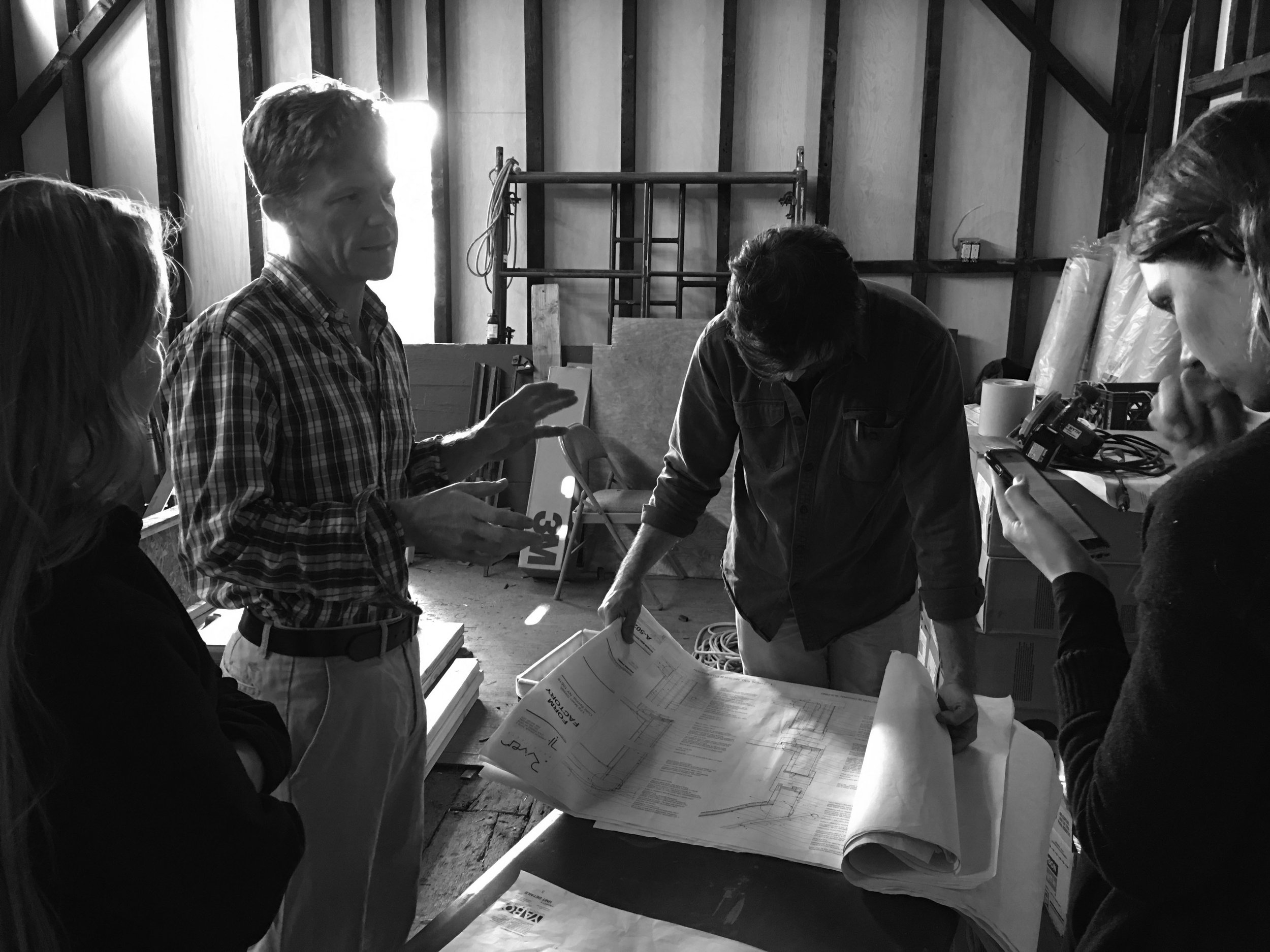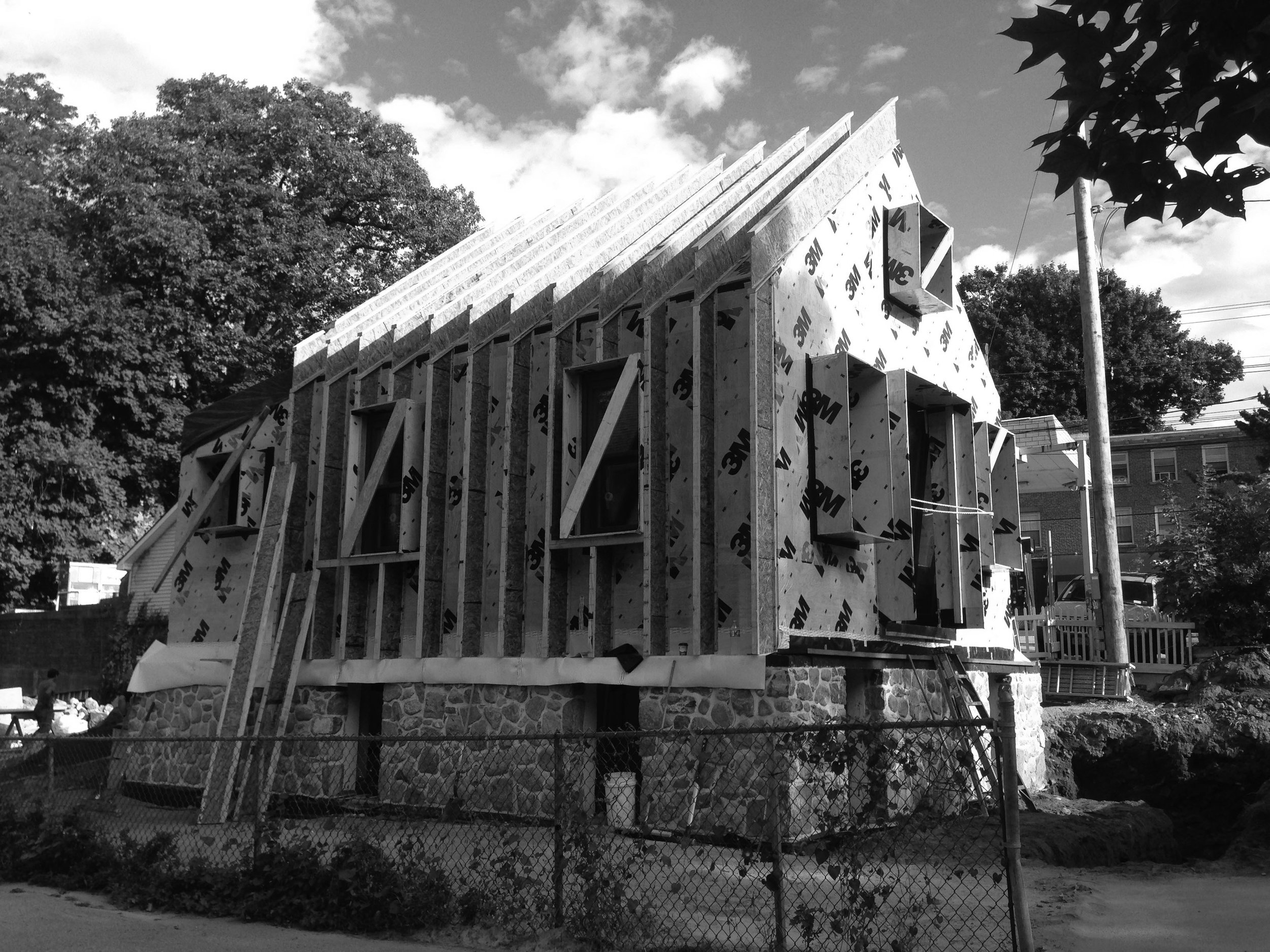Our Founding Story
I was 29 years old and had just returned from a Fulbright Fellowship studying Korean residential architecture when a friend introduced me to my very first client, Oscar. He wanted to open a small bar in Hell’s Kitchen in Manhattan. We had a blast creating a “Cuban Lounge” on a limited budget. We even got published in a few small media outlets.
During my early days practicing architecture, I didn’t know where I would find my next client, but I was fine with that because I had a secret plan. I was going to hide behind the veil of my newly formed River Architects and write a book about Korean architecture, while my husband, James Hartford, financially supported us by working for another architecture firm.
Less than two years after opening my practice, I happened to read an article in The New York Times about a developer working on a project called “Greenwich Street Project.” I wondered “Where can I meet a client like that?” – a client who endorsed modern design and enabled architects to pay their bills. A few days later, just by chance, a real-estate friend who lived down the hall called and asked if I could meet him at a local bar. He had a potential client that he would like me to meet. Serendipitously, it happened to be the same developer who had been mentioned in The Times. He was looking for an architect to help with the interior fit-out of Greenwich Street Project.
When this single interior fit-out of an apartment led to five projects in a matter of a few months, I thought maybe this was when my husband, James, should join the firm. Little did we know that we had jumped into running a full-fledged firm without a business plan, and I had hardly any time left to write that book.
River Architects was gaining momentum, but James was getting tired of living in New York City. We moved our practice from Battery Park City to Hudson Valley — 15 years before it became the hot, desirable place it is now. Taking on everything all at once — restarting our business, buying a fixer-upper house, and having two children during the Great Recession — would nearly kill us, but it would also force us to focus on what was important: family, sustainable design, LEED, and Passive House design. Before the world dusted itself out of the greatest economic downturn of our time, our firm grew slowly, one member at a time.
In 2015, we purchased a small historic blacksmith shop on Main Street in Cold Spring, New York, and renovated it to earn Passive House Source Zero certification, a passion project but also our biggest marketing stunt to date. In 2022, we celebrated our 20th year in business and 10th year of practicing Passive House.
As I’m pondering my second book project on what it takes to start and run an architectural firm, the demand for our Passive House expertise is beginning to hit a fast stride. We were selected to assist with New York Department of State and NYSERDA on a Downtown Revitalization Initiative (DRI) pilot program serving 16 cities and towns to move towards decarbonization. With over 30 cities to be added to the project this year, we are doing our best to live up to our name, River, which we chose to remind ourselves to stay flexible and evolve with the times.
As for my plan to write a book on Korean architecture? With several hundreds of architectural projects behind me and ahead of me, I managed to get a few sample chapters to debut this summer in literary magazines. (Links will be provided here as soon as they are available.) Who would have thought stories on Korean architecture would be accepted by literary publications?
Looking back at those formative years, nothing was an accident. Nothing.
The next chapter in Juhee Lee Hartford’s story can be found at Juhee Lee-Hartford: The Fortune Teller – GHLL (truman.edu)
Follow more of Juhee’s story on Instagram @jleehartford.
Starting an Architectural Firm from Nothing, Part 1 by Juhee Lee-Hartford first appeared on the Altieri wom(En)gineer blog.





![NDoyle_178 Main St_front view_light].jpg](https://images.squarespace-cdn.com/content/v1/5a9e16793e2d09653e985144/1684767163846-976Z8JPAZYYVPI0J3RYY/NDoyle_178+Main+St_front+view_light%5D.jpg)